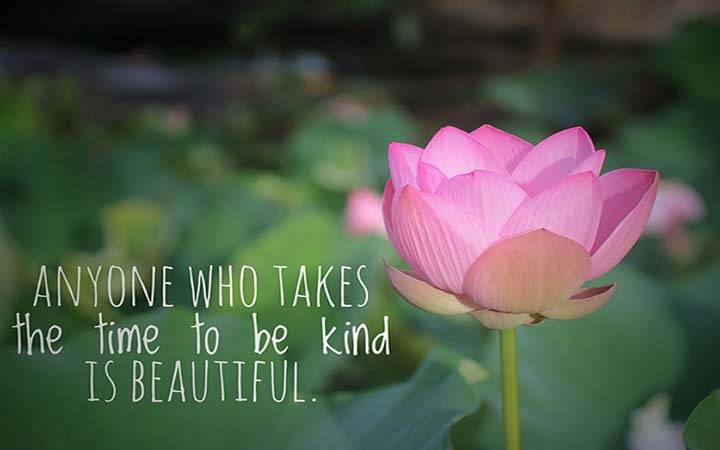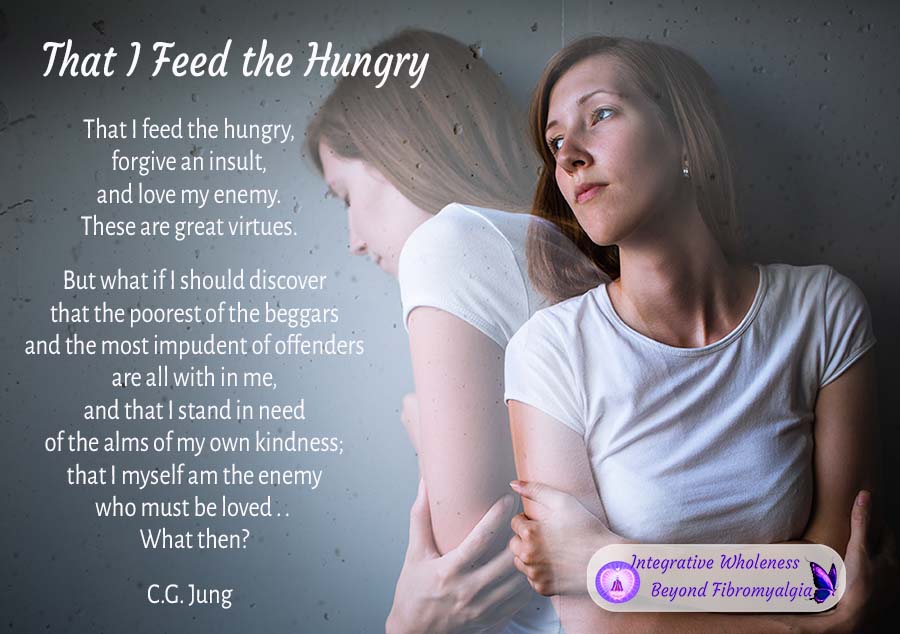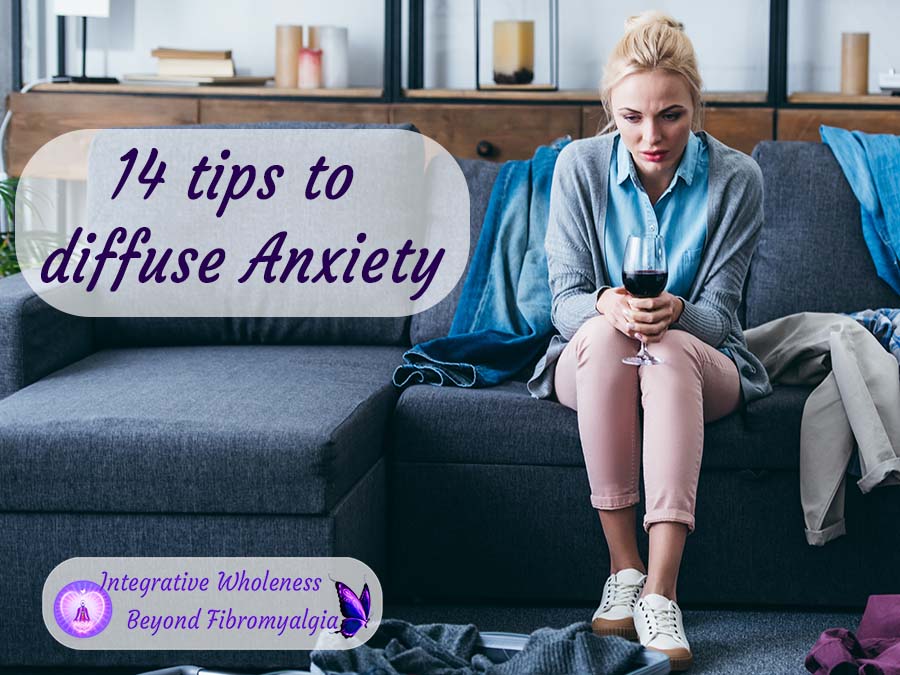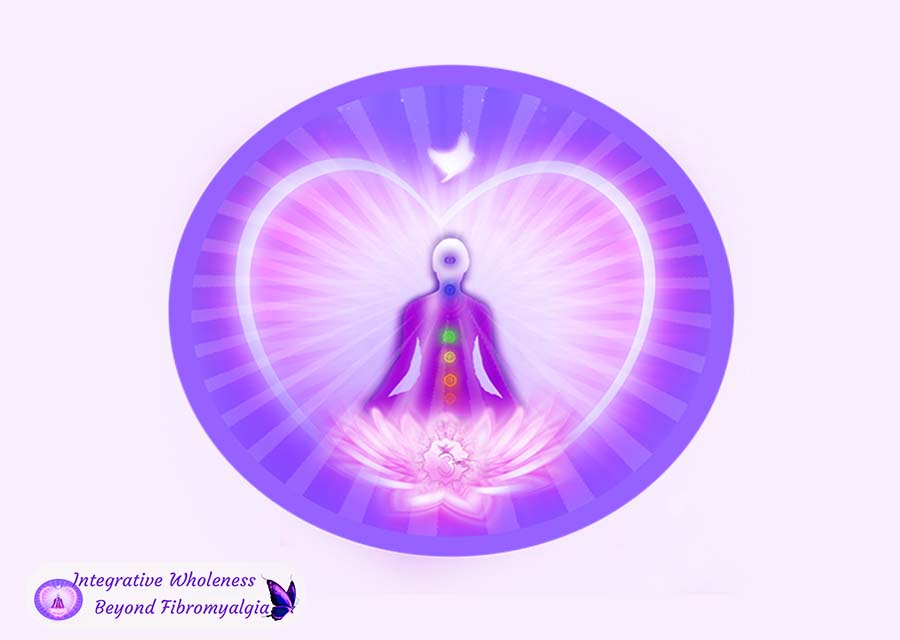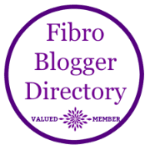People with fibromyalgia struggle with anxiety. It is part of the fibromyalgia syndrome. Fibromyalgia makes every area in our life more difficult including finances, relationship, family, and career.
We have a lot to be concerned about, not only our health, but the impact it has on our lives. Add to that all the craziness on the planet right now leaves lots of space for worry and anxiety.
How can we manage or diffuse our anxiety?
Below are several suggestions that can help to diffuse anxiety.
Step 1: Breathe
Breathing might not seem like a big deal, but if you slow down and deepen your breath, you can connect to a calm inner presence and reduce your anxiety. Here is a great article on how deep breathing eases anxiety.
Step 2: Endeavor to witness the anxiety.
With any emotion that we feel we can watch or witness it rather than be taken over by it. Deep breathing from Step 1, helps us to witness the anxiety. Set that as an intention and see what happens. Intention is a powerful choice and can achieve unexpected results.
Step 3: Watch the mind
Our mind can be a great ally or a terrible naysayer. The mind can pull up all negative experiences from your past to protect you, but really, all that does is fuel your fear and anxiety. Deep breathing can help us to watch the mind rather than be taken over by it. Watching the mind allows us to evaluate our thoughts and then choose to believe them, challenge them or dismiss them.
Step 4: Accept this moment as it is.
Accepting this moment doesn’t mean that you need to like it. I am simply suggesting to fully get/see/understand what is happening in and around you. From that place, you can begin to create a new reality.
Fighting “what is” only feeds what you don’t want. Accepting what is, empowers you to create change.
Step 5: Write it out
I find that making a list of all the things I am worried about helps. Often, it doesn’t seem quite as big on paper. That is because the same frightening thoughts continue to circulate in your mind, making it seem bigger than it really is.
Step 6: Past, Present or Future?
Notice if your anxiety is about something that happened in the past or something that you are afraid will happen in the future or if it is a real problem in this moment. Mark each item on your list as past, present and future.
Step 7: Letting go of the past
If an anxiety is about something that happened in the past, you can discover ways to release the cellular memories and emotions causing the anxiety. Tools such as EFT and the Healing Codes are great tools you can use at home to release past traumas and negative life experiences. If they are deep and painful memories, you may want to seek out a professional who is trained in releasing trauma.
Step 8: Addressing or releasing the future.
Look at your future fears and do a reality check. For each fear about the future, ask yourself if that is a realistic concern or something isn’t likely to happen. If it is something that isn’t likely to happen, find some affirmation or truth focus statements that help you to shift your thought patterns. Write them out on paper and repeat them at least once a day or more. If it is a realistic concern, add it to your list of present concerns.
Step 9: Present concerns
Look at each present concern and ask yourself if it is something that you can do something about. If so, make an action plan of what you can do to address your concern. Even if it is a baby step in the right direction. If you cannot do anything about it, try the other steps in this article.
Step 10: Stop and look around your environment.
In this moment are you safe? Do you have a roof over your head? Do you have food and water? Is your environment free from violence or potential violence? If you answer yes to all of the questions, take a few moments to appreciate the safety of this moment. Afterall, this moment is really all there is.
If you answer no to the question of violence, get yourself to a safe space. Then take it from there. If you answered no to some of the other questions, apply Step 9.
Don’t hesitate to ask for help. You don’t have to do this alone. There are many services to help people in need.
Step 11: Gratitude
Taking some time each day to remind yourself of all that is good in your life can change your experience. We often forget or take for granted the simple things in life.
During my worst years of fibromyalgia, just being grateful for a roof over my head, food to eat, help from my parents and the loving companionship of my cats and dog was all that I could muster. It didn’t seem like much or enough back then. But now, I can see how important those things were and am even more grateful for them than ever. That reminds me how important the things in my life now are.
Step 12: Redirect Your Attention
Sometimes, nothing will ease your anxiety. At those times, I will find something else to focus on. Maybe watch a funny movie. Work in my garden. Clean the kitchen. Watch a romantic movie. Take your kids to the park.
You get the idea. Make your own list of things to do to redirect your attention to in times of anxiety.
Step 13: This too will change
Sometimes if our current situation seems unbearable, it is helpful to remember that the only constant in the world is that everything changes. This can help to accept more fully what is in this moment. Knowing that it won’t last forever. Everything changes.
Remind yourself of other situations in your life that were difficult and that you successfully navigated. You will get through this also!
Step 14: Set an Intention
Setting an intention is a way of identifying what you want rather than focusing on what you don’t want. Form follows attention. Focusing on what you want, rather than what you don’t want, can be a game changer.
Make a list or create a vision board with all that you desire in your life. Refer to it often. Pray, create truth focus statements, affirmations, and goal with where you want your life to go.
Perhaps one of the most powerful intentions is to be calm, grounded and centered.
Many ways to diffuse anxiety
As you can see, there are many ways to diffuse anxiety. Add these suggestions to your toolbox on how to diffuse anxiety. Experiment with the suggestions above and see what is most helpful for you. Perhaps a combination of the above suggestions will be warranted. Different steps may be more helpful in different situations.
May you be calm, grounded and centered. 💕Bindu
